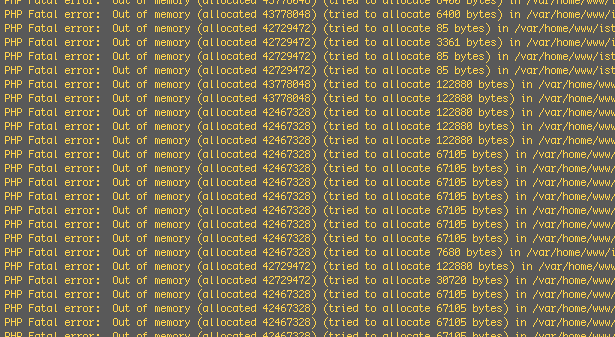Many photographers struggle with the decision whether or not to add a watermark to their photos, balancing the elegance of a photograph against a desire for accreditation, sometimes even compensation, for their creative works, works that are so frequently stolen shared without permission by the online community.
For my own purposes, I choose not to watermark the photographs that I post on Flickr, Facebook, or other sources. Through these media, I choose to share my work freely, opting out of any sort of inbuilt accreditation. However, on this site, where my images are more likely to be found out of context, I choose to add a subtle indication of their source.

I find the watermark above to be readable and yet still subtle on practically any image, working well, without alteration, on solid and mixed-colour backgrounds, remaining legible overtop all but the most intricate detail. Feel free to drag that image about your window or download it and experiment with it yourself. I’ll describe exactly how to create it after the philosophizing below.
What is a Watermark?
Some photographers, feeling the need to protect their work so jealously, create a visual paywall behind which the quality of the photograph is merely alluded to, a barrier so severe as to move beyond a watermark, instead becoming a photographic moat surrounding and isolating their artistic treasures.
However, with the ability to remove these marks seemingly outpacing even the wildest imaginations of would-be counterfeiters, such attempts to secure photos via watermarking are usually futile, often resulting in the mutilation of the image by the artist, the destruction of any value worth protecting, the end result no longer a watermarked photo, instead merely an advertisement for the photo itself.
A problem has been bugging me for quite a while now. Occasionally when working within the WordPress admin pages, checking the stats, updating posts, etc, a blank, all white page will be returned. When this happens the following error is output to the logs.
PHP Fatal error: Out of memory (allocated 42467328) (tried to allocate 67105 bytes) in (docroot)/wp-content/plugins/jetpack/modules/stats.php on line 448
If you’ll notice, WordPress isn’t exactly asking for the moon. It’s using about 40MB of memory, and only asking for 70KB more. Surely, I should be well in the clear with this, especially since I’ve configured every memory setting I can think of upwards of 256MB.
This is a pretty common problem with the PHP script serving the WordPress site requiring more memory than is available or allowed. There are a number of suggested fixes, described below, but none worked for me, and I managed to simply work around the issue (by deactivating plugins) for quite a while. This wasn’t altogether satisfactory, and today I had no ‘superfluous’ plugins to deactivate, so I dug deeper into the world of hosting and PHP multi-user configuration.
Thankfully, I found the silver bullet, and have (hopefully) banished the White Screen of Death forever. If you’ve encountered the same problem, simply follow the steps below to solve the issue.
I love Instagram. And yet, I’m not very fond of the style of Instagram photos. I don’t share the vitriolic distaste that some have for the Instagram style; I simply don’t find the look to be to my taste whatsoever. Rather, it’s the appeal, the very phenomenon of its success, and the beautiful way in which it affects the way we view and appreciate digital photos that I find both fascinating and intriguing.
Instagram is more than just hipster douchebaggery.
It has a more primal draw.
On its surface, Instagram’s obvious appeal is its timely and trendy evocation of things retro. No doubt a large part of its meteoric success has been due to the fact that it not only oozes hipster-chic, the retro cool du jour, but it also makes masterful use of the very best of social media modernity. If there’s one thing hipsters like more than looking cool, it’s being able to look cool in front of their entire social circle.
But Instagram is more than just hipster douchebaggery. It has a more primal draw. Whereas the hyper-concious pursuit of what’s considered capital-C “Cool” is very cerebral, an activity requiring an agonizingly analytical approach by the Painfully Cool, Instagram speaks to us most strongly on a much deeper, more innate level.
Read the rest of this entry »






